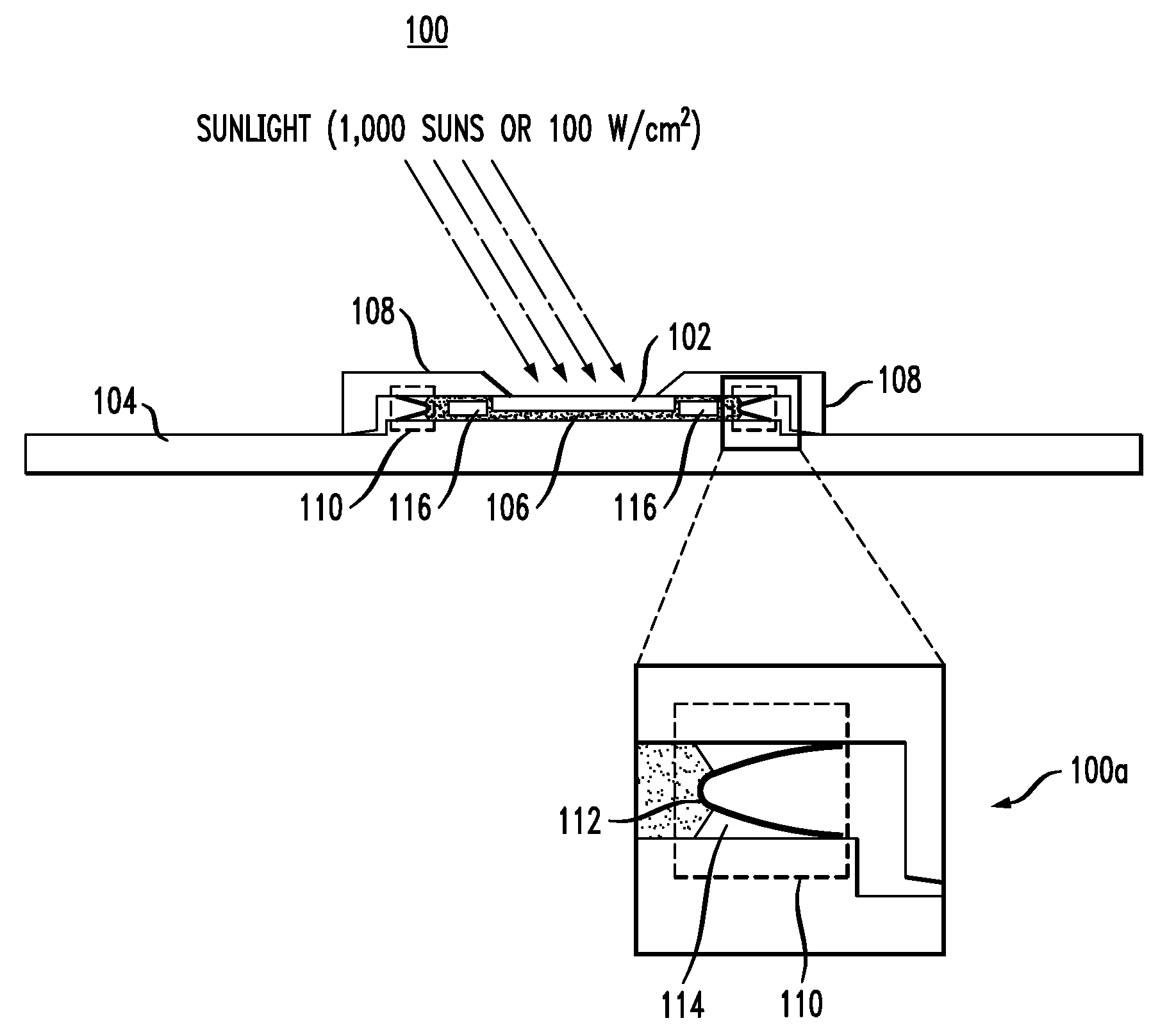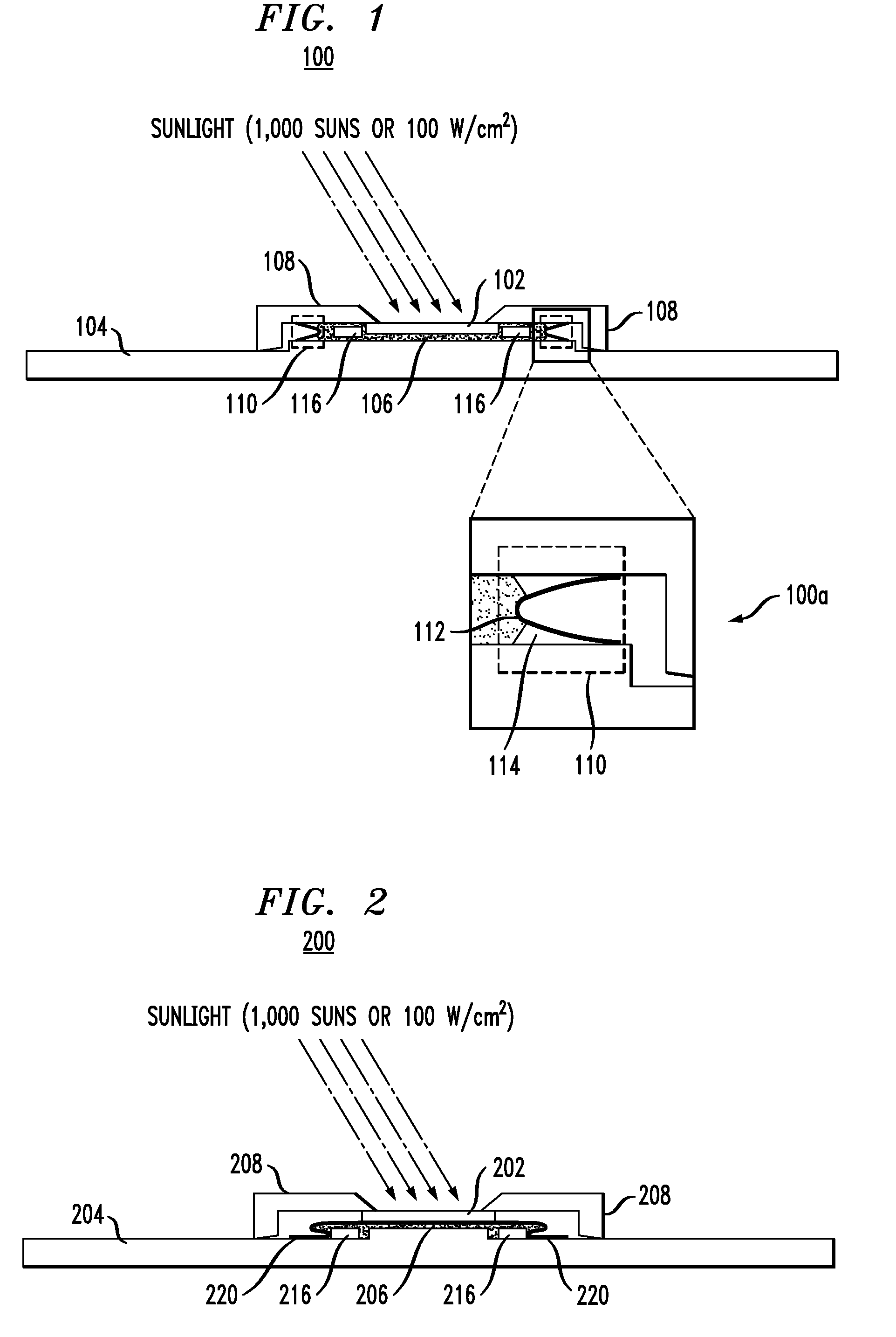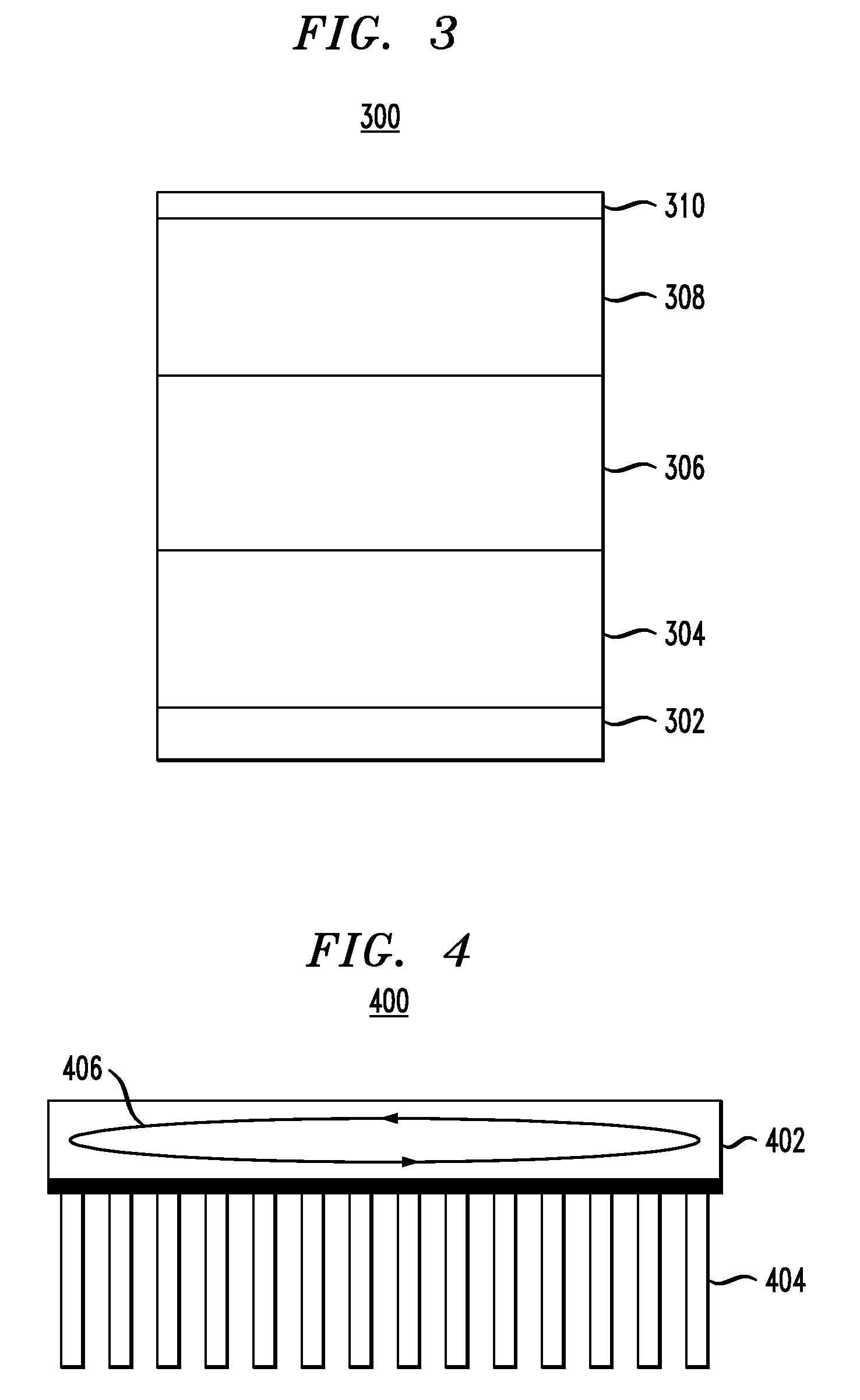Techniques for Cooling Solar Concentrator Devices
a technology of solar concentrator and concentrator cell, which is applied in the direction of semiconductor devices, basic electric elements, electrical equipment, etc., can solve the problems of limiting the power level capacity of solar concentrator devices, waste heat that has to be removed, and limiting the amount of heat that is transferred from the solar converter cell to the heat sink
- Summary
- Abstract
- Description
- Claims
- Application Information
AI Technical Summary
Benefits of technology
Problems solved by technology
Method used
Image
Examples
Embodiment Construction
[0017]FIG. 1 is a diagram illustrating a cross-sectional view of exemplary solar concentrator device 100. Solar concentrator device 100 comprises solar converter cell 102, heat sink 104 and liquid metal 106 between solar converter cell 102 and heat sink 104. As will be described in detail below, liquid metal 106 is configured to serve as a thermal interface between solar converter cell 102 and heat sink 104 (i.e., to thermally couple solar converter cell 102 to heat sink 104) during operation of solar concentrator device 100.
[0018]For ease of depiction, FIG. 1 illustrates a solar concentrator device having a single solar converter cell. It is to be understood, however, that multiple solar converter cells may be coupled to a common heat sink. In some instances, having multiple solar converter cells coupled to a common heat sink is preferred, as this configuration results in a reduction in number of parts, costs and production time. Further, the liquid metal thermal interface describe...
PUM
 Login to View More
Login to View More Abstract
Description
Claims
Application Information
 Login to View More
Login to View More - R&D
- Intellectual Property
- Life Sciences
- Materials
- Tech Scout
- Unparalleled Data Quality
- Higher Quality Content
- 60% Fewer Hallucinations
Browse by: Latest US Patents, China's latest patents, Technical Efficacy Thesaurus, Application Domain, Technology Topic, Popular Technical Reports.
© 2025 PatSnap. All rights reserved.Legal|Privacy policy|Modern Slavery Act Transparency Statement|Sitemap|About US| Contact US: help@patsnap.com



